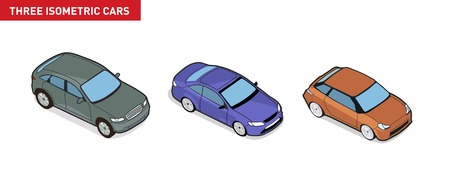1. Understanding the Importance of Tire Maintenance
Taking care of your tires is one of the most important aspects of vehicle maintenance. Your tires affect everything from safety to fuel efficiency and overall vehicle performance. Understanding why tire maintenance matters can help you get the most out of your tires and avoid costly repairs.
Safety First: Why Tire Care Matters
Your tires are the only part of your car that comes in direct contact with the road. Properly maintained tires provide better traction, improved handling, and shorter braking distances. Worn-out or underinflated tires can increase the risk of accidents, especially in wet or slippery conditions.
Save Money on Fuel
Did you know that poorly maintained tires can reduce fuel efficiency? When tires are underinflated, they create more rolling resistance, which forces the engine to work harder and burn more fuel. Keeping your tires properly inflated can help you save money at the pump.
Extend the Life of Your Tires
Regular tire maintenance can help prevent premature wear and extend the lifespan of your tires. Simple habits like checking tire pressure, rotating tires, and ensuring proper alignment can keep them in good condition for longer.
The Impact of Tire Maintenance on Vehicle Performance
Healthy tires contribute to a smoother ride and better overall vehicle performance. When tire pressure, tread depth, and alignment are properly maintained, your car handles better, provides better fuel economy, and ensures a more comfortable driving experience.
Key Tire Maintenance Benefits
| Benefit | How It Helps |
|---|---|
| Improved Safety | Better traction and control, reducing accident risks. |
| Better Fuel Efficiency | Reduced rolling resistance improves gas mileage. |
| Extended Tire Longevity | Prevents uneven wear and unnecessary replacements. |
| Enhanced Vehicle Performance | Smoother ride and better handling on the road. |
By understanding the importance of tire maintenance, you can take simple steps to ensure that your tires remain in top condition. In the next section, we’ll discuss practical tips to help you maintain your tires and maximize their lifespan.
2. How to Check Tire Pressure and Maintain Proper Inflation
Keeping your tires at the correct pressure is one of the most important things you can do to extend their lifespan, improve fuel efficiency, and ensure a safe ride. Driving with underinflated or overinflated tires can cause uneven wear, reduce traction, and even lead to tire blowouts. In this section, youll learn how to check your tire pressure, adjust it when necessary, and understand why proper inflation is so important.
Understanding Recommended Tire Pressure
Every vehicle has a specific tire pressure requirement set by the manufacturer. You can find the recommended PSI (pounds per square inch) in the following locations:
- Drivers side door jamb
- Owner’s manual
- Inside the fuel door (on some vehicles)
- On the glove box lid (on certain models)
Its essential to follow these recommendations instead of relying on the PSI listed on the tire itself, as this number indicates the maximum pressure the tire can handle, not the optimal level for your specific vehicle.
How to Check Your Tire Pressure
Checking your tire pressure regularly can prevent uneven wear and improve fuel efficiency. Follow these simple steps:
- Use a tire pressure gauge – either a digital, analog, or stick-type gauge.
- Check the pressure when the tires are cold (before driving or at least three hours after driving).
- Remove the valve cap from the tire.
- Press the gauge onto the valve stem and read the PSI level.
- Compare the reading to your vehicle’s recommended pressure.
- If necessary, add or release air accordingly.
- Reattach the valve cap when finished.
How to Adjust Tire Pressure
If your tire pressure is too low or too high, you need to adjust it accordingly. Heres how:
| Situation | What to Do |
|---|---|
| If pressure is too low | Use an air compressor to add air gradually. Check the pressure again to ensure it reaches the recommended PSI. |
| If pressure is too high | Release air by pressing the valve stem pin with the tire gauge until it reaches the correct level. |
Why Proper Tire Inflation Matters
Maintaining the right tire pressure has several key benefits:
Better Fuel Efficiency
Underinflated tires create more rolling resistance, which forces the engine to work harder and consumes more fuel. Keeping your tires properly inflated can improve gas mileage.
Improved Tire Longevity
Incorrect tire pressure can cause uneven tread wear, leading to premature tire replacements. Proper inflation ensures even wear and extends the life of your tires.
Enhanced Safety
Underinflated tires are more prone to overheating, while overinflated tires have reduced grip on the road. Both situations increase the risk of accidents. Keeping the correct tire pressure ensures better traction and stability.
Smooth and Comfortable Ride
Properly inflated tires provide a smooth ride by absorbing road shocks effectively. Overinflated or underinflated tires can make the ride rougher and less comfortable.

3. Tire Rotations and Alignments: Why They Matter
To keep your tires in top shape and extend their lifespan, regular tire rotations and wheel alignments are crucial. These maintenance tasks help ensure even wear, improve handling, and boost overall driving safety.
Why Tire Rotations Are Important
Tires don’t wear evenly because weight distribution varies between the front and rear axles. Regularly rotating your tires helps balance this wear, giving you a smoother ride and extending the life of your tires.
Recommended Tire Rotation Patterns
The right tire rotation pattern depends on your vehicle’s drivetrain:
| Drivetrain Type | Recommended Rotation Pattern |
|---|---|
| Front-Wheel Drive (FWD) | Move front tires to rear, rear tires to front, switching sides |
| Rear-Wheel Drive (RWD) | Move rear tires to front, front tires to rear, switching sides |
| All-Wheel Drive (AWD) | Crisscross all four tires for even wear |
The Importance of Wheel Alignments
Wheel alignment ensures your tires make proper contact with the road. If your wheels are misaligned, your car may pull to one side, tires may wear unevenly, and fuel efficiency can drop.
Signs Your Car Needs an Alignment
- Uneven tire wear
- Vehicle pulling in one direction
- Steering wheel is off-center while driving straight
- Vibrations in the steering wheel
How Often Should You Get an Alignment?
Most experts recommend checking your alignment at least once a year or whenever you notice signs of misalignment. If you frequently drive on rough roads or hit potholes, you might need alignments more often.
Combining Rotations and Alignments for Maximum Tire Life
By scheduling regular tire rotations and alignments together, you can ensure even wear, improve handling, and maintain fuel efficiency. Keeping up with these simple maintenance steps will help you get the most out of your tires and enjoy a safer driving experience.
4. Inspecting Tread Wear and Knowing When to Replace Tires
Your tires play a crucial role in your vehicle’s safety, performance, and fuel efficiency. Regularly checking tread wear ensures your tires are in good condition and helps you know when it’s time for replacements.
How to Check Tread Depth
The tread on your tires provides traction and helps prevent slipping, especially on wet roads. Over time, the tread wears down, reducing grip and increasing the risk of accidents. There are a few easy ways to check your tread depth:
Penny Test
A simple way to check tread depth is by using a penny:
- Place a penny into the tread groove with Lincoln’s head facing down.
- If you can see the top of Lincoln’s head, your tread is too worn, and it’s time to replace your tires.
- If part of his head is still covered, your tread depth is likely sufficient.
Tread Depth Gauge
A tread depth gauge provides a precise measurement. Insert the gauge into the tread and check the reading:
| Tread Depth (in 32nds of an inch) | Condition |
|---|---|
| 10/32″ – 8/32″ | New or excellent condition |
| 7/32″ – 5/32″ | Moderate wear, monitor regularly |
| 4/32″ – 3/32″ | Limited grip, consider replacing soon |
| 2/32″ or less | Unsafe, replace immediately |
Signs of Excessive Tread Wear
Besides checking tread depth, look for these signs of excessive tread wear:
- Uneven wear: If one side of the tire is more worn than the other, it may indicate improper alignment or suspension issues.
- Bald spots: Areas with significantly less tread than the rest of the tire suggest excessive wear and possible damage.
- Cracks or bulges: Cracks in the tread or sidewall, as well as bulges, can indicate structural damage that requires immediate attention.
- Exposed wear bars: Most tires have built-in wear bars at 2/32″, and if they are level with the tread, it means your tires are too worn.
When to Replace Your Tires
Knowing when to replace your tires helps keep you safe on the road. Here are common signs it’s time for new tires:
1. Tread Depth Below 2/32″
Legally, most states require a minimum tread depth of 2/32″. Driving on tires with less tread drastically reduces traction and increases stopping distance.
2. Persistent Vibration or Noise
If your tires produce unusual vibrations or noises while driving, they may be worn out or damaged.
3. Tires Are More Than Six Years Old
Even if your tread looks fine, tire rubber degrades over time. Experts recommend replacing tires every 6 to 10 years, regardless of wear.
4. Visible Damage
Cracks, sidewall bulges, or punctures larger than a quarter-inch mean it’s time to get new tires.
Regularly inspecting your tires helps you stay safe and save money by replacing them at the right time instead of waiting until they become a hazard.
5. Five. Tips for Extending Tire Life Through Proper Driving Habits
How you drive has a significant impact on the longevity of your tires. Smooth acceleration, controlled braking, and avoiding road hazards can help extend the lifespan of your tires while also improving fuel efficiency and safety.
Accelerate Smoothly
Rapid acceleration puts extra stress on your tires, causing unnecessary wear. Instead, press the gas pedal gradually to avoid excessive friction that can lead to premature tire deterioration.
Brake Properly
Hard braking can create uneven tread wear and put extra strain on your tires. To preserve their lifespan, anticipate stops and apply the brakes gently whenever possible.
Avoid Road Hazards
Potholes, debris, and rough surfaces can all damage your tires. Whenever possible:
- Steer clear of potholes
- Avoid driving over debris like nails or glass
- Slow down on rough terrain to minimize impact
Driving Habits and Their Impact on Tire Wear
| Driving Habit | Effect on Tires | Best Practice |
|---|---|---|
| Sudden acceleration | Increases tread wear | Accelerate gradually |
| Hard braking | Causes uneven tread wear | Apply brakes smoothly |
| Driving over potholes | Can cause sidewall damage or blowouts | Avoid or slow down |
| Taking sharp turns at high speeds | Leads to excessive tire wear on edges | Reduce speed when turning |
Maintain Proper Speeds
Driving at excessively high speeds generates more heat and friction, increasing tire wear. Sticking to the speed limit can help preserve your tires and enhance overall vehicle safety.
Conclusion
By adopting smooth driving habits, avoiding road hazards, and handling your vehicle with care, you can significantly extend the lifespan of your tires, ultimately saving money and ensuring a safer driving experience.


